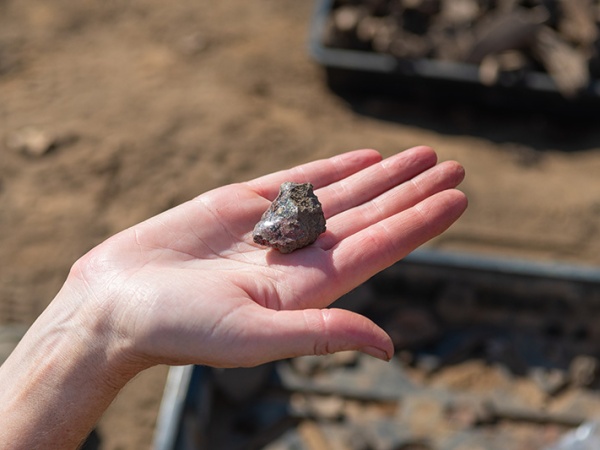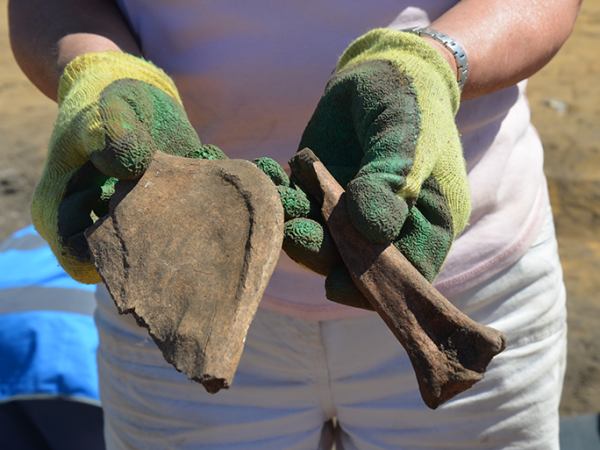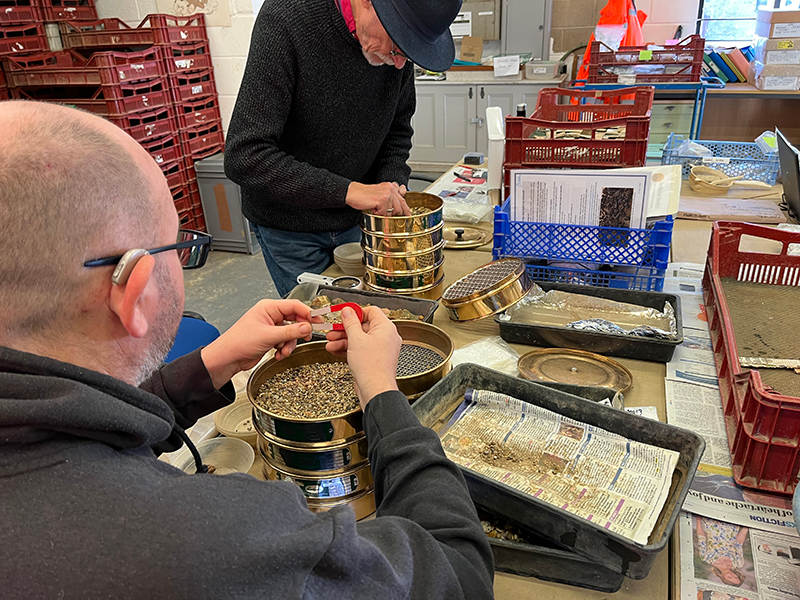Featured image: early medieval pin from Rendlesham
Faye Minter is the Rendlesham Revealed project specialist for metal objects and has completed the initial analysis of the artefacts excavated from Rendlesham in 2023. Faye is our guest writer this week to tell us more.
110 metal small finds were recovered from across the three trenches excavated at Rendlesham last year. The majority were made of iron or copper alloy and 90% of them were recovered from the main trench (Trench 16). 71% of the metal objects were from stratified contexts including the early medieval perimeter ditch, post holes, pits and building foundations. 29% of the objects were unstratified and recovered from the metal detecting of the topsoil and subsoil deposits and hand cleaning after machining.
The iron objects are heavily corroded so X-radiography has been carried out by Norfolk Museum Service to create a durable record and reveal details no longer visible to the naked eye.

The objects range in date from Roman to post-medieval, 15% are early medieval objects of the fifth to eighth centuries. These objects are mainly later 6th to 8th century in date and include knives, a key, pins, buckles and nails.

There is only one silver object, a possibly early medieval spangle, which is trapezoidal in shape with an attachment hole in the centre of the upper edge. Spangles are usually worn on a necklace or attached to pin-heads as decoration.
There were several Roman copper alloy objects including 15 coins, a buckle and brooch. Nine nummi of the House of Theodosius were recovered, and a further six nummi included examples from House of Valentinian, House of Constantine, and of Magnus Maximus. All the Roman coins recovered therefore date to the middle of the fourth century or later.

This year’s objects demonstrate the concentration of later 6th to 8th century activity within the royal compound, with objects of this date deriving from settlement features, especially the perimeter ditch. New Roman finds also added to the evidence of a later Roman activity in the vicinity.
Find out more
What is involved in post-excavation? Read the first year’s blogs to learn more.
Discover more about the Rendlesham Revealed community fieldwork discoveries.
Learn about the previous archaeological investigations since 2008
This fieldwork is part of the community archaeology project Rendlesham Revealed: Anglo-Saxon Life in South-East Suffolk, funded by the National Lottery Heritage Fund. We are very grateful to our many local and national partners who have made this project possible, and for the support of our volunteers and of the landowners and farmers who work and manage this historic landscape.






